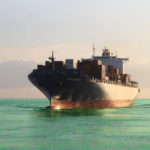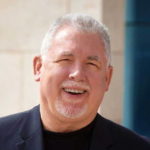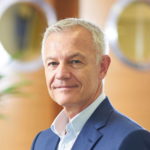The transformation from manual to digital processes keeps third party managers on their
toes while the recovery in shipping markets offers greater opportunities to some. A special report by Michael Hollmann
This year proves to be a turbulent and dynamic year for third party ship managers, with quite a bit of fluctuation of vessels following ownership changes, major boardroom reshuffles and continued diversification through smaller acquisitions and investments.
Some of the medium-sized service providers behind the big two (V.Group and Anglo-Eastern) are reporting considerable growth in the full technically managed fleet since last year. Apart from more aggressive marketing, the increase in shipping activity – especially in the offshore sector – stimulates new business in the sector. Further, the looming 0.5% sulphur cap for marine fuels creates fresh demand for advisory services and solutions.
Internally, all the ship managers have never been more focused on change and transformation than today, with digitization and big data revolutionizing work processes and decision-making inside ship management companies. As emphasized by Bernhard Schulte Shipmanagement: »2019/20 will be defining years for the shipping community as they try to reinvent their business through digitization and setting long-term digital road maps.«
Some of the larger service providers installed central operations control rooms or fleet performance monitoring hubs over the past years, others are now following suit. Once all or the majority of managed tonnage is connected, the challenge is to translate all the incoming data and information into smarter decisions.
Early evidence suggests that superintendents in the local offices and crews on board the ships benefit a great deal from the enhanced transparency and intelligence that is relayed to them. Implementing those new digital solutions and interfaces with shipowning clients requires substantial investments. This could place international third party managers in a better competitive position versus smaller or medium-sized managing shipowners who may struggle with such investments. However, independent providers of ship management software are refining their solutions, too. In fact some of the larger third party managers are marketing their own software solutions externally. Will cloud-based off-the-shelf services offer the same benefits to smaller managers and thus create a level playing-field?
The next big challenge for every third party manager this year is the transition to the 0.5% sulphur cap. While it is operators and charterers of ships that ultimately decide what type of compliant fuels are going to be used from 2020, it is ship managers who have to work out and implement new fuel oil bunker and consumption plans together with their clients. Bunker tanks must be cleaned in time for the switch to new fuels, tanks may have to be modified, equipment upgraded and new spare parts delivered – to hundreds of ships under management. Above all, many thousands of seafarers need to be trained to ensure smooth operations and maintenance of ships under low-sulphur operations.
Third party managers have set up central teams supporting superintendents with information and technical and engineering resources for the implementation of ship-specific switchover management plans. Only a minority of ship owners already commenced tank cleaning operations by the time HANSA talked to executives in third party management in early July. »A lot of decisions are going to be made in August and September«, explained Olav Nortun, CEO of Thome Group, while Franck Kayser, group managing director V.Ships, said he expects preparations for the switch to peak in the end of the third or beginning of the fourth quarter.
Looking at fleet statistics and our »ranking« of third party managers, there have been relatively moderate changes compared with last year. The big two players – UK-based V.Group and Hong Kong-headquartered Anglo-Eastern – still have quite a lead over the rest when it comes to number of vessels under full technical management.
Scale alone is not a priority, though, most executives point out, with some of them suggesting that a fleet size of 200–300 units may be enough to basically achieve the optimum economies of scale. A few managers submitting data, seem to have expanded their business on the technical management side quite notably: Bernhard Schulte Shipmanagement, Columbia Shipmanagement, Wilhelmsen Ship Management and OSM. On the crewing side, V.Group/V.Ships and OSM reported significant increases over the last year.
As far as mergers & acquisitions are concerned, the last 12 months saw continued activity, mainly on a smaller scale – except the investment of US fund manager Oaktree in a 49% stake in Singapore-headquartered OSM in July 2018. This can be considered a major deal, perhaps highlighting growing interest of private equity firms in ship management in addition to shipping assets.
Service providers that expanded their operations or services through acquisitions either directly or through group affiliates include V.Group/V.Ships, Bernhard Schulte Shipmanagement, Wilhelmsen Ship Management, OSM and Zeaborn Ship Management, the latter now claiming a more prominent position in third party business.
V.Group/V.Ships
Traditionally the largest third party ship manager, V.Group/V.Ships kept expanding its business over the past year through acquisition of a majority stake in Norddeutsche Reederei H. Schuldt in Hamburg and merging it with its existing office in the Hansestadt. It hired former E. R. Schiffahrt executive Nils Aden as new managing director in Germany, overseeing the management of an increased fleet of 75 ships, most of them container ships.
Integration of the Hamburg teams and operations was going to be largely completed within the first half of the year, with Hamburg now serving as centre of excellence for container ship management within V.Ships. As part of the cluster formation strategy, the group introduced another centre of excellence in Copenhagen focusing on chemical tankers.
Looking only at number of vessels under full technical management, the latest moves seem not to have generated an increase overall, though. The number has been fairly steady at around 650 – the same as 12 months ago. However, it appears that the depth of services did increase, with group managing director Franck Kayers stating that V.Ships was able to add a number cruise and luxury cruise vessels to the portfolio. The crew management business showed significant growth, as the reported number of vessels for this service went up from around 300 to close to 400.
This year, the group has been busy rolling out a new version of its ship management ERP system Shipsure (Shipsure 2.0) across its office network and fleet The new system will combine all business functions on one platform and offer more real-time information on vessel performance, safety and financials, Kayser explained. The implementation is to be largely completed by the end of the summer, »the biggest chunk has been done,« he said.
Working processes in the local ship management offices are also undergoing some revision following the recent conclusion of V.Ships’ »fleet cell of the future« pilot programme in Glasgow. »It gave us a lot of insight into how we can do things better from managing emails to optimising the purchasing process and sharing information. We gained a lot of knowledge that we are now rolling out to the rest of the offices.«
Bernhard Schulte Shipmanagement (BSM)
The company led by CEO Ian Beveridge achieved significant growth on the full technical management side (400 versus 360) while crewing only showed a substantial reduction (200, down from 280), based on figures submitted to HANSA.
Over the last year, the group continued to expand its capabilities in the LNG supply sector with the commissioning of the world’s largest LNG bunker supply vessel. It also set up a dedicated division for the offshore vessel segment (BSM Offshore) which was strengthened through recruitment of a core team of ex-employees of Sealion Shipping. The team is based outside London as part of the BSM British Isles Ship Management Centre which has been managing floating production units, offshore and wind energy service vessels for some years already. The total number of offshore vessels managed by BSM was 44 at the start of July.
BSM’s digital solutions – offered through group affiliate MariApps also to third parties – continued to expand over the past year, with the roll-out of a new version of its marine ERP software smartPAL, already running on about 1.000 vessels.
MariApps is currently developing a new vessel performance module together with telemetry partner Navidium and BSM’s fleet performance centre, aiming to deliver »real-time feedback on vessel performance to technical superintendents and masters on board.« This will include three sub-modules for voyage optimisation, navigational safety and predictive vessel maintenance, drawing on numerous data sources internally and externally. The company recently acquired World-Link Communications – a satellite communications firm in the marine sector – and is now working on new solutions for ship-shore communications and cyber security. It also launched its own platform for the marine travel business. In addition to BSM, MariApps counts 25 external clilents and expects to add 5-7 more this year.
Regarding the 0.5% sulphur cap, the group says it is assisting a range of diverse clients in meeting the IMO 2020 deadline, supported by its division for newbuilding, conversion and retrofit projects, Schulte Marine Concept. Although it assists owners with scrubber installations where it makes sense, BSM says it does not consider open-loop srubbers a realistic long-term solution for the industry, citing two main issues: First of all, open-lopp scrubber operations will be restricted by local regulation in various jurisdictions, meaning that vessels would have to reserve larger tank capacity for low-sulphur fuel than originally anticipated. Secondly, the use of scrubbers drives up bunker consumption and also operating costs due to maintenance and spare part requirements, it says.
Anglo-Eastern
The managed fleet of the Hong Kong-headquartered ship manager has been steady over the past 12 months after it caught up with V.Ships on number of technically managed vessels over the years. The figures (634 + 209 for crewing only) are hardly changed from last year. »This may mask the fact, though, that ›churn‹ is quite high,« as chief executive officer Bjorn Hojgaard explained. »People buy and sell fleets or even companies, so it’s many ships out or in over a year, a total of 80 or so.«
The latest addition to its global network is a new office in the Dutch town of Goes, dedicated to ro/ro ship management. »It has come off to a strong start, managing close to 20 ro/ro vessels today.« Meanwhile, the group had a change of helm at its Hamburg office, where Carsten Ostenfeldt – former chief operating officer at Nordic Tankers – took over as managing director from Jens Maddey back in spring. The Hamburg office manages around 50 container vessels on behalf of German and Belgian owners, hoping – just like V.Ships – to benefit from more management changes and fleet restructuring in the German market.
According to Hojgaard, Anglo-Eastern is working on some new digitisation projects including performance optimisation, details are not revealed though. »More and more data can be ›harvested‹ using sensor technology and this gives a new level of confidence in and accuracy of the augmentation solutions that ›digital‹ can provide vessel management,« Hojgaard declared.
Preparations for the 0.5% sulphur cap are well under way, with ship specific plans for all vessels of the fleet. Anglo-Eastern developed its own course programme for engineers in advance of 2020 and is also running in-house class room training on generic principles and maker-specific training on exhaust gas cleaning systems. »Whether compliance with IMO 2020 is through exhaust gas cleaning systems or bunkering of compliant fuel, operations will alter a great deal,« said Hojgaard. »Scrubbers need to be operated and maintained, and even if bunkering compliant fuel, people involved have to be trained to understand the new operational risks.«
Columbia Shipmanagement
The company posted a growth in the number of ships managed from 293 to 320 (full technical) and from 51 to 60 (crewing) over the past year. It recorded a gross increase of around 40 vessels »in a tough market environment« from second half of 2018 into 2019, driven by cruise and superyacht business, said chief executive officer Mark O’Neil.
Similar to some of its peers, Columbia is now beginning to place more focus on the offshore segment with the recent launch of a new affiliate called CSM Energy, led by Joachim Brack (Hamburg) and Niki Makri (Cyprus) as co-managing directors. »It will look at traditional ship management for offshore vessels and to environmal compliance and consulting for green recycling,« O’Neil stated, adding that a number of key appointments were about to be made.
Columbia’s efforts for digitisation are focused on the ramp-up of its performance optimisation control room in Cyprus, which offers a growing range of analytical tools to all its clients and to third party customers through a web-based application. Half of Columbia’s managed fleet is already connected to the control room, staffed with two master mariners. Its set-up will be completed by the fourth quarter, O’Neil said, explaining that its functionality is increasing all the time, covering areas like consumption/voyage optimisation, crew rotation and safety.
The CEO expects interest from third parties in the system to soar with the anticipated fuel cost increases due to IMO 2020. »Optimisation of fuel consumption, minimising delays at load and discharge ports, avoiding bad weather, this is going to make the difference of millions on long voyages.« Non-managed clients including banks, commodity traders or other ship managers could put their vessels for a nominal fee onto the system. »All the information is completely segregated and protected. Your operations are not going to be disclosed to other parties,« O’Neil assured.
Columbia is also pleased with the take-up of its joint procurement platform with BSM, Genpro. The service is now being used for the majority of ships under management by both companies, circa 800, O’Neil said. Some 80 major supplier contracts have so far been agreed, »we are probably 70% through our target list of negotiating such framework contracts.«
Wallem
The Hong Kong-based manager has undergone a complete shake-up of its upper echelon following the takeover of Frank Coles as CEO last autumn. The heads of ship management and sales and marketing were replaced and a new chief operating officer and group head of safety and compliance installed.
Its managed fleet had been in decline over the last years, particularly on the crew management side, but it seems to have stabilised now. The company announced a number of contract awards for VLCCs and for medium-range product tankers this year and looks to maintain that momentum under John-Kaare Aun (Ex-Cayman Registry) as new managing director for ship management.
In terms of digital transformation, Wallem has set out to renovate its IT landscape with the implementation of a new ship management ERP software, opting for the cloud-based solution offered by software provider BASSnet. Currently, only four test ships are linked to the platform which is scheduled to go live in company offices by the end of the year.
Thome
The fleet managed by Thome is marginally down from mid-2018, based on figures supplied to HANSA – full technically managed fleet: 220 (down from 235), vessels for crewing only: 209 (from 215). However, CEO Olav Nortun told HANSA that momentum has picked up again for the Singapore-based manager. »The biggest change over the past 12 months was the uptick on the offshore side, and also in oil & gas. We gained new contracts for one FSO and one FPSO last year. Normally we get just one of these per year.« The group also expanded in West Africa, launching new offices serving the offshore sector in Lagos and Port Harcourt.
Following the launch of its new central operations hub in Singapore with four permanent staff in late 2017, Thome continues to study new funcationalities and opportunities for use of its big data. In addition to security and vessel monitoring, it was able to add new alert functionalities for ships related to regulatory compliance in the different regions, Nortun explained. The operations hub also helps experimenting with new technologies including sensors which is going to get more important, Nortun said. »Customers want more information at their fingertips. You have to invest in technology to stay at the forefront.«
Wilhelmsen Ship Management (WSM)
The affiliate of Norway’s listed conglomerate Wilh. Wilhelmsen is the only of the bigger ship managers providing some financial transparency to the public although its results tend to get consolidated with the ships service (port agency) division (»maritime services«).
Latest financial reports show that revenues from ship management have been under pressure, with a fall of 8% during 2018 followed by another 3% decline in the first quarter. WSM cited reduced lay-up management activities as main reason. However, its business pipeline increased considerably as its headquarter was relocated from Kuala Lumpur to Singapore last year, raising hopes of financial improvements over the next quarters.
Of note, the number of ships under full technical management went up strongly from 140 to 180 within the past year. Talking to HANSA, Carl Schou, President of WSM, said that growth has been the result both of intensified marketing and a general recovery in shipping and vessel activity. Significant new contracts were gained especially in the »gas segment«, covering LPG, LNG tankers and floating storage and regasification units (FSRU), he said. Also, the group decided to re-enter the crude tanker segment and it made further inroads into container ship management over the past year, with a handful of smaller container ships joining the fleet.
Schou expects more management contracts for container ships to be signed soon. »We are working on some large projects within the container segment and should be able to convey something to the market after the summer.« At the same time, the company is looking to expand its footprint in the offshore wind sector, with the acquisition of a 50% shareholding in Norsea Wind – a subsidiary of NorSea AS in which parent group Wilh. Wilhelmsen has a controlling stake of more than 75%.
WSM and Norsea Wind were already co-operating on technical maintance solutions for Tennet’s off- and onshore transformer stations and transmission systems in North Europe. »Conceptually, the two businesses [offshore wind energy installations and ship management] are quite similar. We can add a lot of strength in this area,« said Schou.
Digital services have been a focus for WSM for some years already. A project involving sensor technology on a fleet of 10 LPG tankers resulted in annual cost savings of 100 million $ for two of the ships involved.
This is now being followed up with another project involving cheaper sensors and transponders (5-10$ per piece) transmitting data via long range wide area network to a »Ship OS« (Ship Operating System) – a kind of black box installed on the vessel – for processing and relaying ashore. Pending further trials, the system is to be turned into a commercial offering for shipowning clients, Schou announced.
»This new concept allows us to utilise a lot of sensors without having to put a lot of cabling on ships because they communicate wirelessly. They feed the data into the Ship OS which again feeds it ahsore.« The system could mark a step-change, providing the manager with unseen possibilities to monitor ships at a cost »which is acceptable and absorbable,« Schou said.
OSM Maritime Group
Cyprus-registered OSM with headquarters in Singapore, founded in 1989, caused quite a stir exactly one year ago, when fund manager Oaktree Capital Management agreed to take over 49% of the company through investment in its parent Optimum Holding. As to be expected from a company with private equity engagement, the pace of change and accretive activity picked up since then.
A boardroom reshuffle in the first quarter saw founder, majority shareholder and chairman Bjørn Tore Larsen take up the position as CEO from Geir Sekkesæter who switched to the position of managing Director of OSM Norway. German national Björn Sprotte (Ex-Rickmers Shipmanagement) was promoted to chief operating officer & president, in charge of day-to-day operations across the whole group.
The big news last month (July) was the acquisition of Norwegian offshore vessel manager Vestland Offshore by OSM’s parent group, in a clear sign that the group is pursuing a more ambitious growth plan following the investment by Oaktree. The takeover coupled with earlier contract gains for tanker management and for newbuilding supervision saw OSM’s technically managed fleet increase from around 140 to circa 170 and the number of vessels under crew management from 350 to 400, based on latest figures.
COO Björn Sprotte highlighted business gains in the shuttle tanker sector which helped the group increase its market share to 10% of all existing shuttle tankers, he said. Most of the ships in this segment are deployed in the North Sea and offshore Brazil.
Further, it added several VLCCs and capesize bulkers to its managed fleet. »We saw a number of very interesting vessels entering our fleet, other less attractive ships leaving. We did a lot of work on a competence level,« Sprotte said. Further, OSM set up a technical management division at its Cyprus office which previously concentrated on crewing and administrative functions only. Meanwhile growth on the crew management side over the past year was driven by the general recovery in offshore activity.
The group also reports good progress on the range of services offered by its operations center in Singapore, which was opened in 2018 and serves as data and monitoring hub for all its fleet. In June, OSM announced the extension of the centre’s services to third parties including marine insurers, financial institutions and brokers.
The new offering labeled OSM ON reportedly involves 24/7 response and risk management support services, notifications of special regulatory requirements when entering specific areas, emission control and fuel efficiency monitoring. Additional services specifically for offshore and shuttle tanker operations are under development, Sprotte said.
Zeaborn Ship Management
Forged through the integration of former E. R. Schiffahrt, Rickmers Reederei and existing technical management capacity of Zeaborn, Zeaborn Ship Management now looks to get on a growth path following the decimation of its constituent fleets as a result of vessel sales. The number of technically managed vessels stood at 148 at the start of July.
This includes 18 management contracts gained through the recent acquisition of CPO Tankers, the tanker management subsidiary of Offen Group, and represents a slight decline year-on-year. This time last year, Zeaborn reported 163 units under full management. R Rob Grool, ship management veteran and CEO of the company since May, sees the takeover of CPO Tankers as the final piece of the jigsaw. »You can’t just manage dry cargo ships, you need to be able to offer tanker management services as well. With this wide scope of expertise, we can now take any commercially available ship into third party management,« he pointed out. The CPO team is still based in its existing office and will move in with Zeaborn in a couple of months time. »We want to do it nice and slowly, so everyone feels the continuity and we don’t spook or frighten off anybody.«
Although the three companies merged into Zeaborn Ship Management all come from a shipowning background, the organisation has already embraced the kind of service mentality that is needed to win external customers. There is no lack of opportunities, Grool insists. »There is a fair bit of sale & purchase activity and also more movement between flags which quite often involves a change of manager.«
Provision of enhanced digital services is very much based on individual customer requirements, the CEO explained, highlighting Zeaborn’s integration with a customer from the liner shipping sector. »They first asked us to get all the information we can possibly get from the ships and then to trim it down to what’s really necessary. All the rest is more or less input to the essentials.« The goal is to realign operations as closely as possible with vessel scheduling and cargo operations of the client, to avoid money getting wasted on wrong decisions on arrival times at load ports or on bunker ports, Grool said.
Michael Hollmann
























